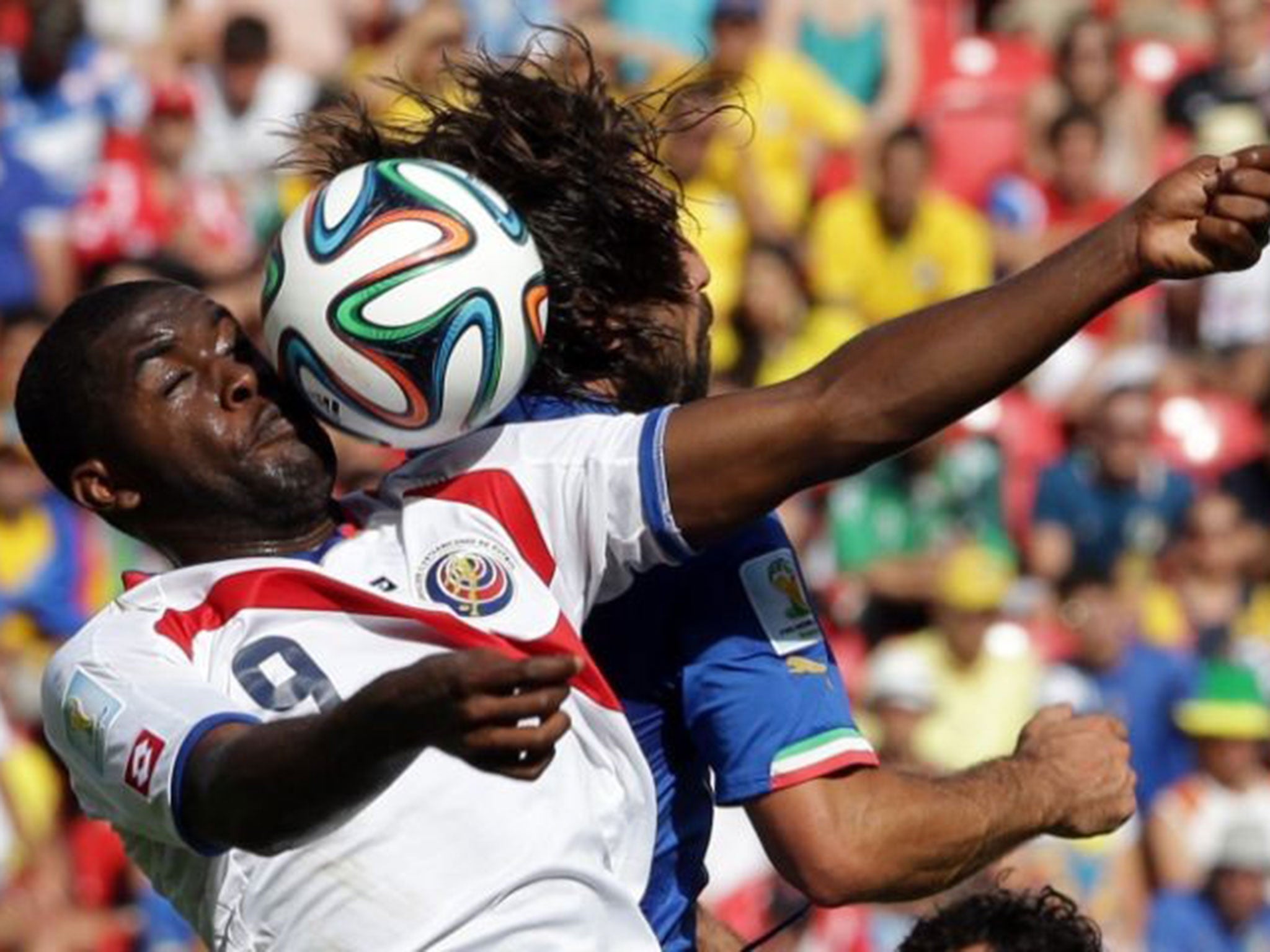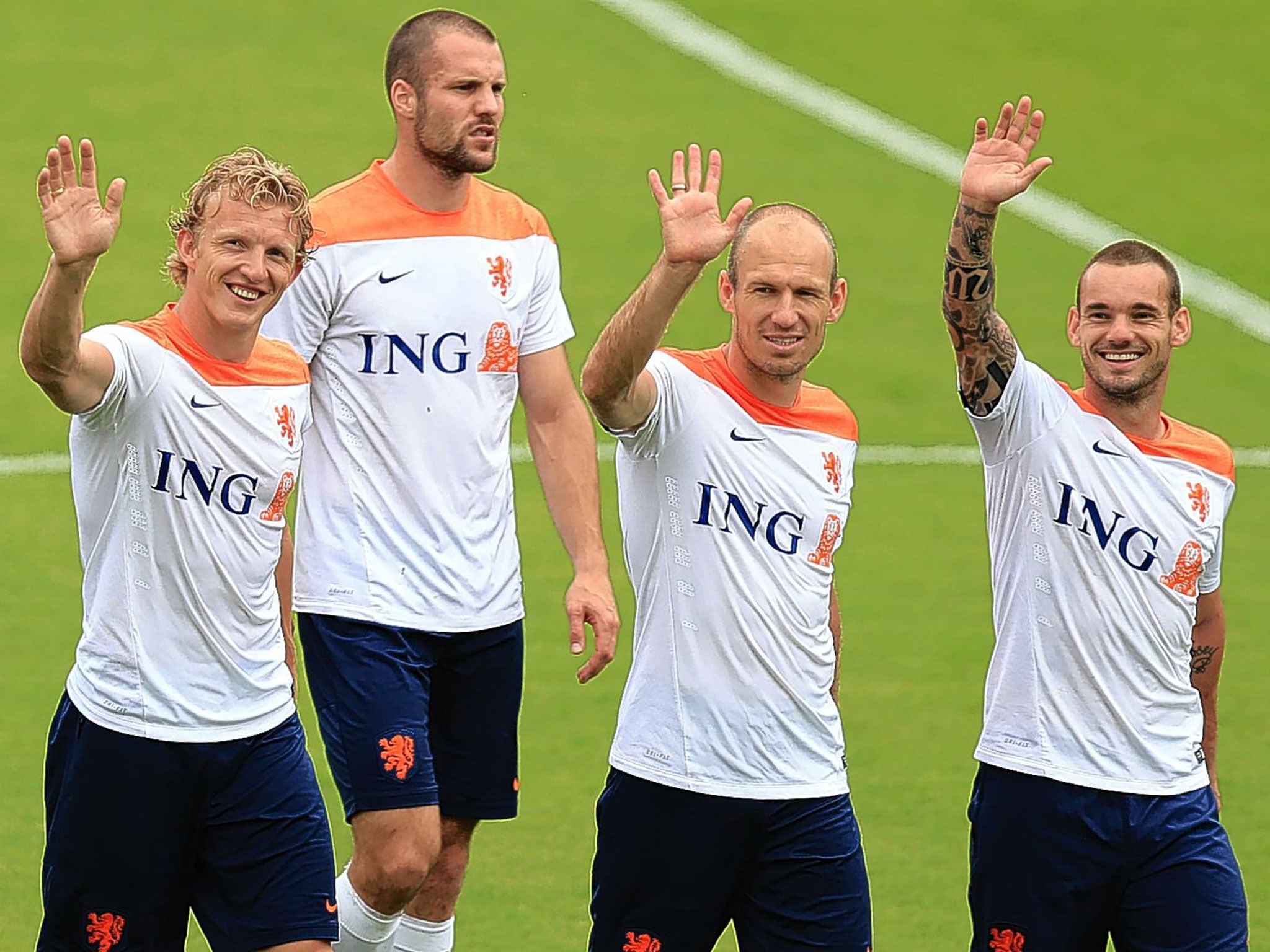Alex Scott on World Cup 2014: Backs to the future as we watch the way forward in defence
Teams from the Americas – and the Dutch – are proving very flexible

Your support helps us to tell the story
From reproductive rights to climate change to Big Tech, The Independent is on the ground when the story is developing. Whether it's investigating the financials of Elon Musk's pro-Trump PAC or producing our latest documentary, 'The A Word', which shines a light on the American women fighting for reproductive rights, we know how important it is to parse out the facts from the messaging.
At such a critical moment in US history, we need reporters on the ground. Your donation allows us to keep sending journalists to speak to both sides of the story.
The Independent is trusted by Americans across the entire political spectrum. And unlike many other quality news outlets, we choose not to lock Americans out of our reporting and analysis with paywalls. We believe quality journalism should be available to everyone, paid for by those who can afford it.
Your support makes all the difference.Like every other football fan the players in the women’s game have been avidly following the World Cup. When I was away with England we watched games in Belarus and Ukraine, on Sunday we watched them on the coach travelling back from playing Liverpool, and of course we’ve watched them at home.
As a player it is hard to just switch off and watch it as a fan, you are always looking at the formations, assessing what players are trying to do. It has been fascinating seeing the different tactical approaches and the flexibility of some teams. Most of the South and Central American teams have played very different formations to the ones we are used to, often employing three at the back, and there has been lots of interchanging.
I think the Dutch have been among the most fluid. I always look at the player in my position at right-back and it’s been interesting watching Daryl Janmaat. He has played as a conventional right-back, but also as the right wing-back. In both positions he hardly ever goes past the halfway line. Daley Blind gets forward on the left but Janmaat makes sure the team is never over-committed. In contrast Mexico’s wing-backs, especially in the group games, kept bombing up and down.
We play four at the back at Arsenal now but used to play five and I would get forward a lot. You do need to be adaptable. At Liverpool on Sunday I changed position with 20 minutes left. Danielle Carter needed to come off as she is only just back from injury, and as we were 1-0 up we wanted to bring on another defensive player. Leah Williamson came on to play on the right of the defence and I pushed on. When we lost the ball I dropped back, Leah moved across, and we were effectively a back five. It worked as we held on to win.
Young players like Leah tend to be versatile. Players are now coached to play in different positions and systems. As we have seen with teams like Chile, if you are going to play three at the back the central defenders need to be more footballers than centre-halves traditionally have been as they need to be comfortable when they are drawn into wide areas.
We are adapting with England too. Under Hope Powell we always played 4-3-3 – everyone knew it. Mark Sampson wants to add a new element so we are not so predictable. You need to at that level. So in the past three internationals we have been playing a diamond midfield.

That changes things for the full-backs, suddenly there is more space ahead of you. To start with, Demi Stokes and I were bombing forward all day, but Mark stresses the need to pick and choose when to go.
Naturally, the right-backs I’ve enjoyed watching most are the attacking ones. I love watching Dani Alves. I modeled my game on him, and while there is a question mark over his defending at times he has such energy and creates so many problems in the final third, his coaches have been happy to take the package.
One of the highlights of a World Cup is seeing lesser-known players come through, like Joel Campbell with Costa Rica. In my position one of the stars has been Fabian Johnson. He’s so quick, he’s been a real threat for the United States.
It is important for young boys and girls to study the players in their position when they watch matches and see what they do. I used to watch games and think ‘what makes her the best?’ and consider how I could add qualities to my game. You are never too old to learn. With England, Mark had me watching video of David Alaba, the Bayern Munich full-back. He underlaps a lot and Mark thought I could learn from watching how and when he does it.
Watching all these games has certainly whetted the appetite for our World Cup in Canada next summer. England have almost qualified now so it is a matter of finishing the job, then making sure I can keep my place. As we’ve been reminded this summer, World Cups are special.
Alex Scott plays for Arsenal Ladies. She has won 114 England caps and played in the Women’s World Cup in 2007 and 2011. Arsenal Ladies play Chelsea Ladies at Borehamwood FC on Sunday, kick-off 2pm
Join our commenting forum
Join thought-provoking conversations, follow other Independent readers and see their replies
Comments